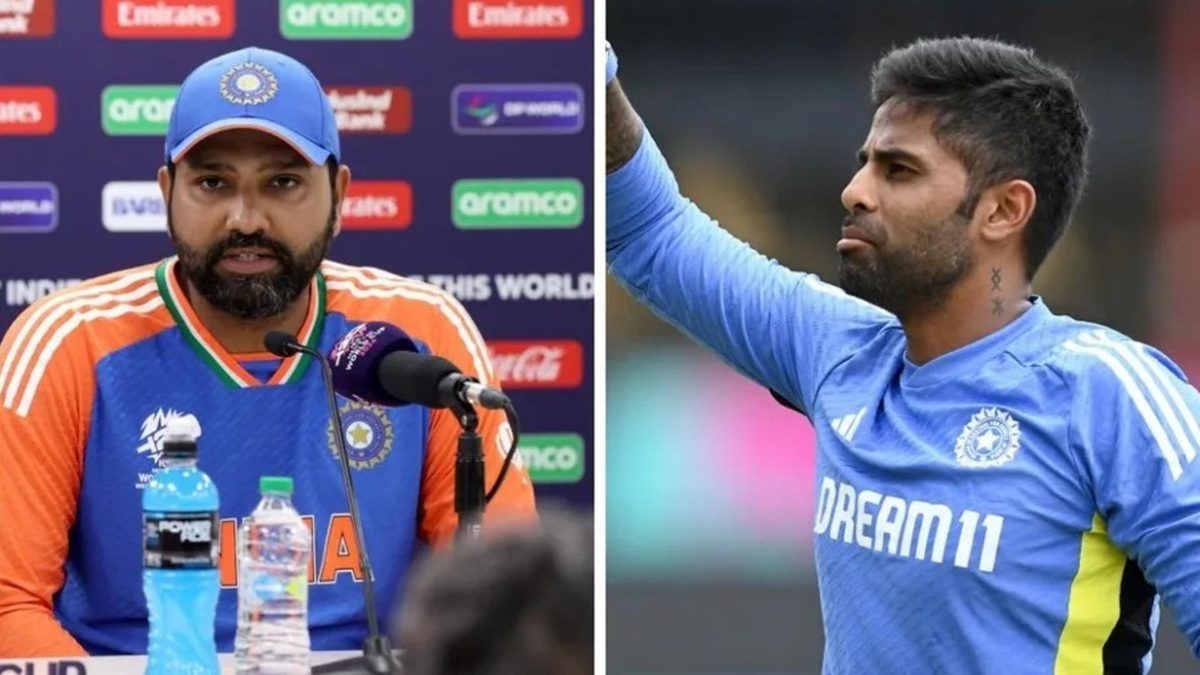
As of June 29, 2024, India were on the look-out for a new coach (soon confirmed as expected, to be Gautam Gambhir)Rohit Sharma's retirement from one white-ball format but not the other meant the BCCI also had to appoint a new captain in T20Is, while retaining Rohit as skipper for the 50-over format (sacking him there was never a realistic option).
When India's squads were announced for the white-ball tour of Sri Lanka, Suryakumar Yadav was named as the new T20I captain, despite the overwhelming feeling that that post would be given to Hardik Pandya. Rohit was still named in charge of the ODI side, making official the splitting of white-ball captaincy for India.
India have had split white-ball captaincy before...sort of
India's first captaincy appointment after the inception of T20 international cricket, in fact, saw a split between the white-ball formats. MS Dhoni was named captain for the T20 World Cup in 2007, after many seniors in the team, including ODI captain Rahul Dravid, gave the tournament a miss.
ICYMI India started their Asia Cup campaign with an easy win against Pakistan in the Asia Cup, chasing down 109 in 14.1 overs. 🙌
— Wisden (@WisdenCricket) July 20, 2024
READ: https://t.co/AL8QYJE9WA | #INDvPAK pic.twitter.com/oD92WMewsc
This was only temporary though, as Dhoni's success in the T20 World Cup combined with Dravid's wish to step down from captaincy paved the way for the wicketkeeper to take over both white-ball formats in September 2007. In 2008, Dhoni was made the all-format captain after Anil Kumble announced his Test retirement.
Dhoni's reign as skipper went on for seven years in the red-ball format and ten in the white-ball formats. In all three, he was succeeded by Virat Kohli, with the BCCI preferring one player to lead across the board.
But the BCCI are clear; captaincy is all for one and one for all
When Kohli gave up captaincy of the T20I team in late 2021, Rohit Sharma replaced him. At the same time, then-BCCI president Sourav Ganguly claimed that they had asked Kohli to reconsider stepping down from leading in T20Is, but were unsuccessful.
As a result, in Ganguly's words, "...the selectors felt that they cannot have two white ball captains in two white-ball formats. That's too much of leadership." So, Rohit took over in ODIs as well, and then in Tests in February 2022.
Seven months after denying his role in replacing Virat Kohli with Rohit Sharma as Indian captain, Sourav Ganguly recalled his influence over the same affair.
— Wisden India (@WisdenIndia) July 14, 2024
Read here🔽https://t.co/lWnshtRSKC pic.twitter.com/TkqQZIZRkv
For all their reluctance over the best part of two decades to appoint different captains for different formats (without an apparent cricketing reason), India will, at least for the next 18 months or so, have two different permanent captains for the ODI and T20I formats.
While those two captains won't have to play under each other, Gill's appointment as ODI and T20I vice-captain means that there's a remote possibility of Suryakumar playing under the opener in ODIs when Rohit is not around, and Gill playing under Suryakumar in the shortest format.
SKY and Rohit now, but what happens down the line?
Over the last few years, the packed international calendar and two-month long IPL season have meant that the more senior all-format players have opted to skip bilateral series in order to keep themselves fit. The arc of the cricketing universe is long, but it bends towards burnout. Having a permanent captain who is often required to miss entire series, as Rohit Sharma has in recent years, cannot be an ideal scenario for anyone.
Read more: How has Suryakumar Yadav, India's new T20I captain, fared as skipper in the past?
As far as the actual cricket is concerned, the three formats currently on the international circuit are sufficiently differentiated by this point, that they may well be different sports.
There are already international players seen as specialists in one format or another, and despite the colour of the ball and uniform being the same, ODI and T20I cricket simply do not carry all of the same on-field considerations for captains. Stubbornly sticking to one leader across both formats is not always the wisest choice.
"When you do the same, is it not ball-tampering?"
— Wisden India (@WisdenIndia) July 20, 2024
Mohammed Shami has responded to Inzamam ul-Haq's allegations that India were tampering with the ball during the recent T20 World Cup.
READ: https://t.co/YRINPNa6zM pic.twitter.com/1ZI7BhG4x8
India have been forced into a detour here, but rest assured that the BCCI will not take kindly to being strong-armed — even by cricket itself. The appointment of Shubman Gill as vice-captain in both ODIs and T20Is for the Sri Lanka tour is an indication that the board may be looking to return to one white-ball captain as soon as possible.
It is unlikely that India suffer any real consequences as a result of not splitting their white-ball captaincy (assuming that is the route they choose), but a change of heart in the near future could pay rich dividends. Just as the country does not want for a lack of cricketing talent, it surely does not want for multiple capable leaders.
Follow Wisden for all SL vs IND series updates, including live scores, match stats, quizzes and more. Stay up to date with the latest cricket news, player updates, team standings, match highlights, video analysis and live match odds.








